#convenient store wholesaler
Explore tagged Tumblr posts
Text
Website: https://buddiesdistro.com
Address: 108 NE 48th St, Oklahoma City, OK 73105
Phone: 405-601-1555
Buddies Distribution is your premier partner in wholesale distribution, specializing in providing high-quality products to a diverse range of businesses. As a leading C store wholesaler, we supply convenience stores with an extensive selection of top-notch items to keep their shelves stocked and customers satisfied. Our expertise extends to being a trusted dispensary supply store, offering a comprehensive inventory of essential products for dispensaries to operate smoothly and efficiently. At Buddies Distribution, we pride ourselves on being a reliable convenient store wholesaler, delivering exceptional service and competitive pricing to meet the unique needs of your business. Trust Buddies Distribution for all your wholesale needs, and experience the difference in quality and convenience.
Business Email: [email protected]

1 note
·
View note
Text
Wholesale Convenience Store Supplies | Cannatron
Find all your convenience store supplies and products in one place with Cannatron. Shop our extensive range of smoke convenience store items.
#convenience store supplies#convenience store products#convenience store items#convenience store supplies wholesale#smoke convenience store#corner store wholesale#bodega wholesale
0 notes
Text
Explore the Benefits a Convenience Store Wholesaler Can Bring to Your Business
Your convenience store is unique and has different requirements, which can be fulfilled with a vast range of products and partnering with reliable convenience store distributors. Atlantic Dominion Distributors, a reputed convenience store distributor in Virginia, is committed to boosting your retail success. From managing logistics and sourcing to delivery, we assist with everything. Read our post to explore the benefits our convenience store wholesale can bring to your business. Call 757-333-7400 to begin our strategic partnership and enhance your business operations.
1 note
·
View note
Text
I used to work at JoAnn's and let me give you a tip. Don't buy fabric there if you can help it. It's overpriced low quality crap. You can absolutely find fabric for just as cheap online and if you're a "have to touch it before I know if I'll hate it or not" person lots of online places sell samples.
Case in point: Robert Kaufman Kona solids. I've seen claims online that the Kona solid quilting cotton, which is the highest quality quilting cotton solids JoAnn's sells, is different and lower quality than the Kona cotton you can get at a quilt shop. I can't speak to the validity of those claims but I 100% would not be surprised if it were true. But let's set that aside and just see how JoAnn's prices measure up.


As you can see, the regular price at JoAnn's is $9.99. The regular price at this random quilting online store I spent 20 seconds on duckduckgo to find is $7.95. Sure, the sale price is 15¢ cheaper at JoAnn's. But JoAnn's is constantly playing this "our fabrics are cheap because they're on sale! Don't look at how much they regularly cost anywhere else" psychological warfare game which I do NOT appreciate.
I'm sure if you looked harder than the 20 seconds I spent on duckduckgo you could find Kona cotton for cheaper than JoAnn's has it and you wouldn't have to wonder about the quality claims. And all their fabric is like this. Maybe a decade ago it was a good deal but now? There's a reason they've gone bankrupt.
Just because I could, I compared fabric wholesale direct's price for solid color polyester Jersey knit fabric, which is regularly priced at $5.99 and is currently on sale for $5.09. JoAnn's comparable fabric starts again at $9.99/yard and that fabric is currently on sale for $6.99. There are 10 colors of the JoAnn's $6.99 fabric and 45 colors of the FWD $5.09 fabric FWD does free shipping over $99 and flat rate shipping at $7.95 for anything below that. Depending on how much you buy, you'll potentially be paying the same or less for the FWD fabric and 1. It's probably higher quality and 2. There's 4 times as many color options.
JoAnn's is good for if you need less than a yard and have the time and ability to go to the store in person. And yeah, if you're shopping in person, you don't have to pay shipping. But the quality of all their fabric is low and the "sale" prices are around the same as a place with higher quality fabric.
I buy embroidery floss and thread at JoAnn's cuz embroidery floss is cheaper in person than on DMC's website and you can't trust product photos of thread to be color accurate. And I buy sewing notions there sometimes cuz it's convenient. But even the scissors I spent $30 on there a decade ago (who knows how much they are now) were $17 at Walmart when I lost the first pair and had to replace them 4 years later.
Also they treat their employees like shit and currently no one besides store managers gets health insurance through them because the only full time position in their stores is the store manager. And even before the bankruptcy they shortstaffed and did everything in their power to avoid paying for benefits and overtime. It was the worst job I ever had and that's saying something because I worked at Walmart and had a "this creepy guy went to JAIL over what he did to me" experience there.
#v gets educational instead of just being a hater#(ok I'm partly being a hater but I HAVE RECEIPTS)#v's fiber arts tag#sewing
721 notes
·
View notes
Text
Schlady ~✶~ art et cetera by Kelli Kohn
✶ Shop online: Schlady.com ✶ Shop in person: Events / Stockists ✶ Follow Schlady: Instagram / Tiktok / Tumblr / Facebook ✶ Become a stockist: Wholesale




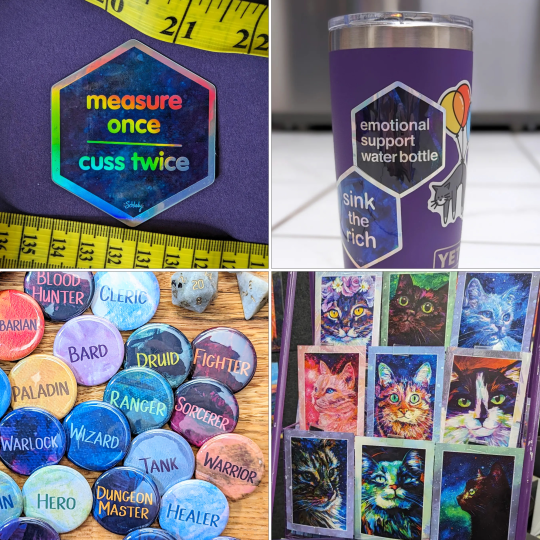
Note: I do have a long-running Schlady shop on Etsy with higher prices (to help cover Etsy's fees) that I keep only out of convenience as a last resort.. but please, shop direct at Schlady.com whenever possible! Your purchase from my store & spreading the word about Schlady that way goes much further in supporting me & my art; thank you. 💜
✶ More quick links:
Acrylic Paintings Commissions & Custom Artwork * Art Prints Button Pins Holographic Stickers Magnets * Notecards LGBTQ+ Pride Buttons * LGBTQ+ Pride Stickers Pronoun Buttons *
Anything marked with an asterisk * is customizable! I make each button & magnet item to order, so if there's a background design/color or wording you want to change, leave a note for me on your order. 💜

✶ About Schlady
Hey there! I'm Kelli (they/she), artist & owner of my brand Schlady, which covers the whole spectrum of my colorful art & design work: original acrylic paintings, commissioned pet portraits, art prints, greeting cards, stickers, buttons, magnets, and more. I love vibrant colors, happy accidents, and carrying my "painty" side into my digital work. I care quite a bit about cats, landscapes, memes, and expressions of pride, and I love to make new & custom designs whenever I can.


I’m grateful for each & every reblog, customer, client, collector, and stockist that keeps my art dream going strong. Thank you! 🌈💜- Kelli
#pinned post#intro post#schlady#kelli kohn#artists on tumblr#artist alley#artist shop#commissions open#acrylic painter#queer artist#lgbtq artist#colorado artist#ohio born and raised#american artist#cat art#long post
25 notes
·
View notes
Text
Gas Station Stream of Consciousness Post
Gas Stations as Liminal Spaces

I've had quite a few hyperfixations in my day - ATMs, laundry detergents, credit cards - so my current one pertaining to gas stations is fitting considering my affinity for liminal spaces and the dedication of this blog to them. Liminal spaces are transitory in nature, hence their portrayal in online circles through photos of carpeted hallways, illuminated stairwells, dark roads, and backrooms, among other transitional points.

Gas stations are posted online as well; images of their fuel pumps or neon signage photographed through a rainy car window communicate their liminality and the universal experiences they provide to all of society. Perhaps they are the ultimate specimen of a liminal space. The machines they are created for, automobiles and tractor trailers alike, themselves are tools for motion, vestibules that enable travel and shipment across long distances at high speeds. Cars and roads are liminal spaces, albeit in different formats, and gas stations serve as their lighthouses. Vehicles at filling stations, therefore, are in a sense liminal spaces within liminal spaces within liminal spaces.
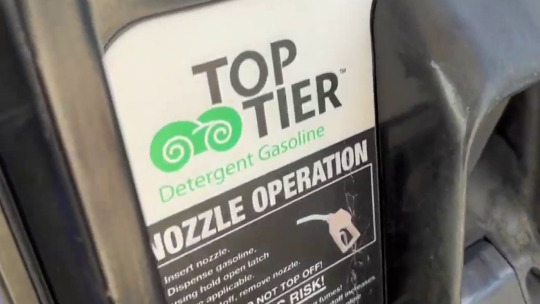
The uniqueness of a gas station as a liminal space, however, is its intersection with the economics and aesthetics of capitalism. Gasoline (and diesel fuel) is a commodity, downstream from crude oil, merely differentiated by octane ratings. Some argue that minute distinctions between agents, detergents, and additives make some brands better than others. Indeed, fuels that are approved by the Top Tier program, sponsored by automakers, have been shown to improve engine cleanliness and performance, but this classification does not prefer specific refiners over others; it is simply a standard. To a consumer, Top Tier fuels are themselves still interchangeable commodities within the wider gasoline commodity market.
The Economics of Gas Stations

The market that gas stations serve is characterized by inelastic demand, with customers who reckon with prices that fluctuate day in and day out. This is not to say that consumer behavior does not change with fuel prices. It has been observed that as prices rise, consumers are more eager to find the cheapest gas, but when prices fall, drivers are less selective with where they pump and are just happy to fill up at a lower price than last week. In response, gas stations lower their prices at a slower rate than when increasing prices, allowing for higher profit margins when wholesale prices fall. This has been dubbed the "rockets and feathers" phenomenon.

When portrayed as liminal spaces, gas stations are most often depicted at night, places of solitude where one may also enter the adjacent convenience store and encounter a fellow individual who isn't asleep, the modern day lightkeeper. The mart that resides at the backcourt of a gas station is known to sell goods at higher prices than a supermarket, simultaneously taking advantage of a captive customer, convenient location, and making up for the inefficiencies of a smaller operation. It may come as no surprise, then, that gas stations barely make any money from fuel sales and earn their bulk through C-store sales. This is a gripe I have with our economic system. Business is gamified, and in many cases the trade of certain goods and services, called loss leaders, is not an independent operation and is subsidized by the success of another division of a business, a strategy inherently more feasible for larger companies that have greater scale to execute it.

Nevertheless, most gas station owners, whether they have just one or hundreds of sites, find this method fruitful. Even though most gas stations in the US sell one of a handful of national brands, they operate on a branded reseller, or dealer, model, with oil companies themselves generally not taking part in the operations of stations that sell their fuels. The giants do still often have the most leverage and margin in the business, with the ability to set the wholesale price for the distributor, which sells at a markup to the station owner, which in turn will normally make the least profit in the chain when selling to the end customer at the pump. This kind of horizontal integration that involves many parties lacks the synergies and efficiencies of vertical integration that are so applauded by capitalists, but ends up being the most profitable for firms like ExxonMobil, who only extract and refine oil, and on the other end of the chain merely license their recognizable brands to the resellers through purchasing agreements. Furthermore, in recent years, independent dealers have sold their businesses to larger branded resellers, in many cases the ones from whom they had been buying their fuel.
A Word on ExxonMobil's Branding Potential
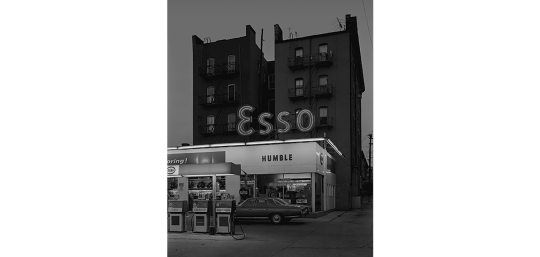
The largest publicly traded oil company in the world is Exxon Mobil Corporation. It is a direct descendent of the Rockefeller monopoly, Standard Oil, which was broken up in 1911 into 34 companies, the largest of which was Jersey Standard, which became Exxon in 1973. This title was generated by a computer as the most appealing replacement name to be used nationwide to unify the Humble, Enco, and Esso brands, decades before AI was spoken of. The latter brand is still used outside of the United States for marketing, arising from the phonetic pronunciation of the initials of Standard Oil. In 1999, Exxon and Mobil merged, and the combined company to this day markets under separate brands. Exxon is more narrowly used, to brand fuel in the United States, while Mobil has remained a motor oil and industrial lubricant brand, as well as a fuel brand in multiple countries.

Mobil originated in 1866 as the Vacuum Oil Company, which first used the current brand name for Mobiloil, and later Mobilgas and Mobilubricant products, with the prefix simply short for "automobile". Over time, Mobil became the corporation's primary identity, with its official name change to Mobil Oil Corporation taking place in 1966. Its updated wordmark with a signature red O was designed by the agency Chermayeff & Geismar, and the company's image for service stations was conceived by architect Eliot Noyes. New gas stations featured distinctive circular canopies over the pumps, and the company's recognizable pegasus logo was prominently on display for motorists.

I take issue with the deyassification of the brand's image over time. As costs were cut and uniformity took over, rectangular canopies were constructed in place of the special ones designed by Noyes that resembled large mushrooms. The pegasus remained a prominent brand icon, but the Mobil wordmark took precedence, which I personally believe to be an error in judgement. This disregard for the pegasus paved the way for its complete erasure in 2016 with the introduction of ExxonMobil's "Synergy" brand for its fuel. The mythical creature is now much smaller and appears only at the top right corner of pumps at Mobil gas stations, if at all.

Even into the 90s and the 21st century the Pegasus had its place in Mobil's marketing. In 1997, the company introduced its Speedpass keytag, which was revolutionary for its time and used RFID technology, akin to mobile payments today, to allow drivers to get gas without entering the store or swiping a card. When a Speedpass would be successfully processed, the pegasus on the gas pump would light up red.

When Exxon and Mobil merged in 1999, the former adopted the payment method too, with Exxon's less iconic tiger in place of the pegasus.

The program was discontinued in 2019 in favor of ExxonMobil's app, which is more secure since it processes payments through the internet rather than at the pump.

What Shell has done with its brand identity is what Mobil should've done for itself. The European company's logo was designed in 1969 by Raymond Loewy, and is a worth contender for the "And Yet a Trace of the True Self Exists in the False Self" meme. In recent years, Shell went all in on its graphic, while Mobil's pegasus flew away. I choose to believe that the company chose to rebrand its stations in order to prevent the malfunction in the above image from happening.

ExxonMobil should have also discontinued the use of the less storied Exxon brand altogether, and simplifying its consumer-facing identity to just the global Mobil mark. Whatever, neither of the names are actual words. As a bonus, here is a Google map I put together of all 62 gas stations in Springfield, MA. This is my idea of fun. Thanks for reading to the end!
#exxonmobil#exxon#mobil#gas station#gas stations#liminal space#liminal spaces#liminal#liminalcore#liminal aesthetic#justice for pegasus#shell#corporations#capitalism#branding#marketing#standard oil#economics#gas#gasoline#fuel#oil companies
107 notes
·
View notes
Text
Web apps could de-monopolize mobile devices

Mobile tech is a duopoly run by two companies — Google and Apple — with a combined market cap of $3.5 trillion. Each company uses a combination of tech, law, contract and market power to force sellers to do commerce via an app, and each one extracts a massive commission on all in-app sales — 15–30%!
This is bad for users and workers. Many companies’ gross margins are less than 30%. In some categories, that means there’s no competition. Take audiobooks: publishers wholesale their audiobooks to retailers at a 20% discount, so a retailer that sells its audiobooks through an app, paying a 30% commission, will lose money through every sale.
This is why the only convenient mobile audiobook stores are Apple Books (a front-end for Amazon’s Audible) and Google Books: Apple doesn’t have to pay the Apple tax, and Google doesn’t have to pay the Google tax, and that means that Apple and Google can demand crippling discounts and preferential treatment from publishers and independent authors.
The app tax is a tax on the workers whose creative works are sold on mobile platforms, because creative workers have the least bargaining power in this monopolized supply-chain. Our publishers can squeeze us — and the editorial workers, narrators, and sound technicians who work on our books — to make up the difference.
Independent authors who sell directly on these platforms, meanwhile, have even less leverage and get even worse terms. Things aren’t much better at the other end of the supply-chain, either: while firms prefer to wring concessions out of their workers and suppliers, they’re not averse to raising prices on customers, providing that all the competitors do so as well.
Since every competitor is also selling through an app store and either paying a direct app tax or ceding margin to the mobile duopoly as a condition of selling in their in-house, pre-installed stores, they all have the same incentive to raise prices.
Economists call this the monopsony problem (or, since we’re talking about two companies, a duopsony or oligopsony problem). That’s an unwieldy and esoteric term, so Rebecca Giblin and I coined a much better one, and wrote a book about it: Chokepoint Capitalism:
https://chokepointcapitalism.com/
Theoretically, there’s a way to avoid the app store chokepoint: web apps. These are part of the HTML5 standard, and if a browser fully implements that standard, then developers can make a self-encapsulated “app” that’s delivered in the browser, complete with an icon for your home screen, capable of doing anything an app store app can do.
A company that wants to sell stuff without paying the app tax could hypothetically deliver a web app that the user could download and install via their browser. This doesn’t just avoid the app tax, it also overrides the app stores’ editorial control, like Apple’s decision to block privacy tools in China to aid in state surveillance.
But you can’t have a web app without a web-app-compatible browser, and you can’t get a web-app-compatible browser in Apple’s App Store. The only browsers permitted in the App Store are those based on WebKit, the browser engine behind Safari. This means that every browser on Ios, from Firefox to Edge to Chrome, is just a reskinned version of Safari.
That’s a problem, because Webkit suuuuuuucks. Without the discipline imposed by either regulation or competition, Apple has systematically underinvested in Webkit, so that major bugs remain unaddressed for years and years. Some of these bugs are functional — Webkit just doesn’t act the way its documentation says it does — but others represent serious security vulnerabilities.
This is an important point: app store proponents say that denying users the right to choose where they get their apps and excluding competitors is necessary, the only practical way to prevent security risks to users. But while app stores can prevent the introduction of insecure or malicious code, they can also block the introduction of code that fixes defects in the manufacturer’s own security.
Mobile companies don’t want insecure code on their platforms, but they also don’t want to erode their profits. An Iphone with a working VPN app is more secure than one that lacks that app, but if that Iphone is owned by a Chinese person, it endangers Apple’s access to low-waged Chinese labor and 350 million affluent Chinese consumers.
Likewise, a third party might create a browser engine that corrects the security defects in Webkit, but if Apple allows users to install such a browser engine, they will lose the ability to extract billions through the app tax.
Companies never solely pursue their customers’ interests. Instead, they seek an equilibrium that allocates as much value as possible to their shareholders. This allocation is limited by both competition (the fear that a bad service will drive customers to a rival) and regulation (the fear that a bad service will attract crushing fines).
The less competition and regulation a company faces, the more value it can take from its users and give to its shareholders. Here, mobile platforms have it easy: they don’t have to worry about competition because of regulation. Laws like Section1201 of the Digital Millennium Copyright Act (DMCA) and Article 6 of the EU Copyright Directive (EUCD) make it illegal to jailbreak a phone to install third-party apps. Jay Freeman calls this “felony contempt of business model” — that is, the government will punish your competitors for trying to compete with you. Nice work if you can get it.
As the old joke goes, “if you wanted to get there, I wouldn’t start from here.” The rules that should promote better corporate conduct (through competition) instead encourage worse behavior, by putting companies in charge of who gets to compete with them, in the name of user safety.
Meanwhile, users are increasingly trapped inside walled gardens, because their media, apps, and data are locked up in mobile silos and switching to a rival means enduring the switching costs of leaving it all behind. Mobile companies claim to have built fortresses to keep bad guys out, but those high walls make fortresses into prisons that keep customers locked in.
But anything that can’t go on forever will eventually stop. The manifest unfairness and insecurity of the regulation-backed walled garden model has attracted the interest of new trustbusters, competition regulators from China to the EU to the USA to the UK.
The UK plays a key role here. The country’s Competitions and Markets Authority boasts the largest workforce of technical experts of any competition regulator in the world: the CMA’s Digital Markets Unit has 50+ full-time engineers, which allows it to produce the most detailed, most insightful market investigations of any nation’s competition regulators.
https://www.gov.uk/government/collections/digital-markets-unit
(Don’t get too excited, though: in keeping with the UK’s abysmal standard of government competence, Parliament has yet to pass the long-overdue secondary legislation that would give the DMU its own enforcement powers. Ugh.)
Last June, the CMA proposed a market investigation into cloud gaming and mobile browsers (gaming is the largest source of app store revenue and cloud gaming is a way to avoid the app tax, so it’s a closely related issue):
https://www.gov.uk/cma-cases/mobile-browsers-and-cloud-gaming
There were many significant submissions over this proposal, including comments that EFF legal intern Shashank Sirivolu and I drafted:
https://www.eff.org/document/comments-electronic-frontier-foundation-cmas-inquiry-mobile-browsers-and-cloud-gaming
Many commenters (including EFF) proposed that the CMA should intervene to improve the state browser engines competition on Ios and Android (Android allows multiple browser engines, but doesn’t give them the same hardware access that Chrome and its Blink engine enjoy).
This argument seems to have landed for the CMA. Today, they announced that they would go ahead with a full-fledged market study into mobile browsers and cloud gaming:
https://assets.publishing.service.gov.uk/media/63984ce2d3bf7f3f7e762453/Issues_statement_.pdf
The most obvious outcome of this study would be an order forcing the mobile vendors to open up to full-featured, alternative browser engines. This is compromise solution, between forcing open app stores onto the platforms — which would mean forcing Apple to allow sideloading and policing Google’s use of contracts to limit third-party stores — and doing nothing.
A browser engine mandate is less satisfying than open app stores, but it is also more achievable, and easier to monitor and enforce. With Android, Google proved that you don’t have to use hardware locks to prevent third-party app stores — you can use a hard-to-detect web of contracts and incentives to create an app store monopoly that’s nearly as airtight as Apple’s.
But policing whether a platform permits rival, full-featured browser engines — ones that enable web apps and cloud gaming without paying the app tax — is much easier. Also easier: developing objective standards for evaluating whether a browser engine is secure and robust. Open Web Advocacy’s criteria are a great starting point:
https://assets.publishing.service.gov.uk/government/uploads/system/uploads/attachment_data/file/1118238/Open_Web_Advocacy_-_Consultation_response_-_Publication_version.pdf#h.q9nder968wzm
The CMA announcement is welcome, but has some gaps. It under-emphasises the importance of hardware access (for web apps to compete with native apps, they need full hardware access), and could leave new browser engines at the mercy of the existing review teams that review all the other apps in the app store (who reject rival browser engines out of hand).
Meanwhile, while I was writing this article, Mark Gurman published a jaw-dropping scoop in Bloomberg: Apple will open its Ios platform to rival app stores by 2024, in order to comply with the EU’s Digital Markets Act (DMA):
https://www.bloomberg.com/news/articles/2022-12-13/will-apple-allow-users-to-install-third-party-app-stores-sideload-in-europe I’m still absorbing this news, but I think this complements the CMA browser engine work, rather than rendering it redundant. Alternative app stores don’t necessarily mean alternative browser engines. Apple says it will have security standards for alternative app stores, and these standards could well include a ban on browser engines. At a minimum, it’s clear that different levels of scrutiny need to be applied to apps, app stores, and browser engines, as each one poses different threats and opportunities.
[Image ID: London's Canary Wharf, a high-rise business district that is home to the UK Competition and Markets Authority. The colours of the buildings have been inverted, and the sky has been filled with a Matrix 'waterfall' graphic. In the foreground is an ogrish giant, standing at a console, yanking on a lever in the shape of a golden dollar-sign. The console is emblazoned with the logos for Chrome and Safari. The ogre is disdainfully holding aloft a mobile phone. On the phone's screen is a Gilded Age editorial cartoon of a business-man with a dollar-sign for a head. The phone itself is limned with a greenish supernova of radiating light.]
#pluralistic#digital markets act#dma#ios#android#cloud gaming#gaming#mobile gaming#blink#chrome#interoperability#duopoly#comcom#safari#mobile#antitrust#apple#browser wars#competition and markets authority#browser engines#adversarial interoperability#trustbusting#open web advocacy#digital markets unit#google#competitive compatability#interop#competition#monopoly#uk
103 notes
·
View notes
Text
The afternoon Joe Biden announced his decision to withdraw from the 2024 presidential race, eight days after the assassination attempt on Donald Trump and well into a year of axis-tilting events, @DifficultPatty posted a question on X, thirsty for an answer: “Which wine pairs best with unprecedented times?”
“All of them,” replied one user.
“Apocalypse IPA,” said another. “It’s a real thing.”
Also real are the times we continually find ourselves. All devastation and disquiet. That’s the vibe of late, anyway. New historical benchmarks sprout with wild surprise on what feels like a weekly basis, and a collective mood has developed across social media that we live in a constant state of “unprecedented times.”
The phrase, now a fixture of the zeitgeist, initially shot into pop discourse around 2015 during Trump’s first presidential campaign, a campaign, you’ll remember, that fed on a specific American lust for political agitprop. Not long after, as the spread of Covid-19 reengineered work and home life, the phrase further lodged itself into our shared vocabulary, recast as a convenient descriptor for an increasingly inconvenient future. It has since become shorthand for the continuous spiral of everyday reality.
A study conducted in 2020 by The New York Times and research firm Sentieo found that the phrase saw a 70,830 percent increase in usage in corporate presentations from the previous year (outpacing du jour expressions like “new normal” and “you’re on mute”). In an article published by MIT, titled “Surviving and thriving in unprecedented times,” Christa Babcock, a CEO and alum on the business school, advised entrepreneurs to embrace the difficulty in front of them: “Expect that things will not return to the way they were and be thrilled about it.”
Only, for the rest of us, the constant, uncomfortable change was the problem.
The phrase was gaining traction offline and on. “Only difference between millennials and gen z is how many ‘unprecedented times’ u live thru before climate change swallows ur house,” @bocxtop tweeted in February 2022 when X was still called Twitter. That same year, 19 students were gunned down at an elementary school in rural Texas and California was hit with record unemployment. In grocery stores across the country, food prices steadily climbed as a result of the war in Ukraine.
Today, the phrase has magnified beyond actual meaning, a cheap emblem of our erratic cultural mood. It is uniformly used to describe just about every fresh hell that emerges, from the US election and the conflict in Gaza to the escalating dangers of climate catastrophe. Living through “unprecedented times” is the new normal on social media.
Congestion pricing in New York City? “More unprecedented times is all,” Jared of @TransitTalks said on TikTok. Also unprecedented: giant spiders, a canceled Tenacious D tour, relationship break-ups, and the unraveling social unrest in the UK.
This era of apparent precedent-setting is not only defined by bad news, of course. The phrase has no particular allegiance to disaster or personal woe. It applies wholesale. Lil Jon’s performance at the Democratic National Convention? Simone Biles winning the most Olympic gymnastic gold medals? Green energy growth in Kansas? Astounding and uncommon occurrences but also, that’s right, unprecedented ones.
“I’m ready to go a month without something unprecedented,” @midwestsidegunn said recently on TikTok. “Bring back boring. I’m ready to be bored.”
That’s unlikely, given the domino effect caused by Biden’s departure from the race in July, portrayed just as you might expect. It only spawned more unprecedentedness: the genuine possibility of a Black and South Asian woman president, and a reenergized Democratic Party that just weeks ago was on life support. A callback to a politics of hope from the Obama era, Kamalamania has again ignited the promise of what for so long felt like an impossibility.
“You know, the story of my life and the history of our country is that progress is possible, but not guaranteed,” former US secretary of state Hillary Clinton said at the DNC this week. Along with Michelle Obama and Elizabeth Warren, women who were also well acquainted with overcoming the impossible, Clinton spoke to the urgency of now, and the weight of the moment before America. Democracy is under an extraordinary threat, she said, portions of the country already warped by the unreality of Trumpian politics, but it can be defended, reborn even.
By Thursday night, Harris had solidified the nomination. Millions of people watched from their homes, TV screens aglow with a message of hope, believing that this next turn into unprecedented times, far from their last, would bring a steadiness long dissolved by a power-indulgent MAGA movement.
The future, a friend recently reminded me, is a litany of unprecedented moments: ache and anguish persist, but so do awe and amazement. Rather than bemoan the fact that “the cold reality of the status quo has set in,” as one X user colored the Harris-Walz ticket, Andrew Drummer celebrated. This time, there was reason to rejoice.
“Fucking great! Things as usual would be a welcomed reprieve for a little bit,” Drummer replied. “I’m done with living at the end of times in unprecedented situations. We welcome precedented times!”
4 notes
·
View notes
Text

Gashapon
Gashapon, or capsule toys, originate from Japan. They consist of small toys enclosed in transparent spherical capsules.
You can often find self-service vending machines for gashapon at toy stores or convenience store entrances. By checking the promotional card on the machine, you can see which style of toy is available inside. Simply insert a coin (typically ¥0.5 or ¥1.0), twist the mechanism in front of the machine, and a capsule will drop from the bottom containing one of the illustrated styles, similar to a lottery feeling. However, some machines may specify "1:1 type" on their promotional cards, indicating that other types of toys at the same ratio are added, reducing the chances of getting the original style.
Collecting a complete set can be costly and may result in duplicates. Some toy stores sell complete sets, which is more convenient than buying individual gashapon and often available well in advance before they are put into gashapon machines.
A typical gashapon contains a plastic eggshell that can be opened into two halves, with a toy and an instruction sheet inside. The instruction sheet for gashapon is also known as "egg paper". Due to the size limit of gashapon shells, most toys inside require assembly, enhancing their playability. Egg paper serves as a promotional leaflet for gashapon; collectors should keep it as it holds commemorative and trading value.
To reduce transportation costs, wholesalers often remove the eggshells from gashapon, so most gashapon sold in stores do not include eggshells but do include egg paper.
2 notes
·
View notes
Text
did you know roses came in lavender?



Three weeks. It had already been three weeks since Han Jisung had moved to this apartment in big Seoul city. Three weeks since he had traded the stuffy humidity of Malaysia for the milder yet polluted air of the South Korea’s very capital city to pursue his life-long dreams of becoming one of the best songwriter and producer in the country - nay the world! It had also been three weeks since he had last left said apartment for something other than convenient store runs at ass o'clock at night. A little fact his roommate was not about to make it go unnoticed.
Jisung agrees to accompany his roommate to flower wholesale in Busan on a whim. Little did he know the flowers were far from the prettiest things he'd encounter on his trip.
link
#stray kids#skz#fanfiction#jeongsung#han jisung#yang jeongin#flower shop au#fluff#han jisung x yang jeongin
9 notes
·
View notes
Text
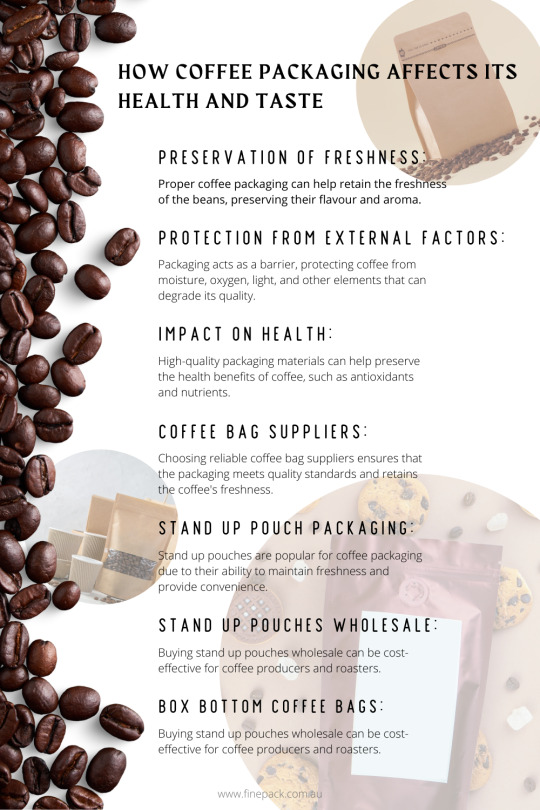
How Coffee Packaging Affects Its Health and Taste
Preservation of Freshness: Proper coffee packaging can help retain the freshness of the beans, preserving their flavour and aroma.
Protection from External Factors: Packaging acts as a barrier, protecting coffee from moisture, oxygen, light, and other elements that can degrade its quality.
Impact on Health: High-quality packaging materials can help preserve the health benefits of coffee, such as antioxidants and nutrients.
Coffee Bag Suppliers: Choosing reliable coffee bag suppliers ensures that the packaging meets quality standards and retains the coffee's freshness.
Stand Up Pouch Packaging: Stand up pouches are popular for coffee packaging due to their ability to maintain freshness and provide convenience.
Stand Up Pouches Wholesale: Buying stand up pouches wholesale can be cost-effective for coffee producers and roasters.
Box Bottom Coffee Bags:Box bottom coffee bags offer stability and space efficiency, making them ideal for storing and displaying coffee.
#coffee bag suppliers#printed coffee pouches#box bottom coffee bags#Stand Up Pouch Packaging#Stand Up Pouches Wholesale#bottom stand up pouches
5 notes
·
View notes
Text
How to Start a Grocery Delivery Business
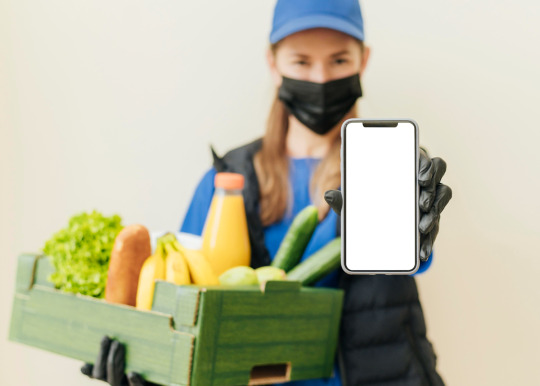
In an instant where convenience is important and online services are influencing consumer habits, starting a grocery delivery business can be a lucrative venture. As the demand for efficient and time-saving solutions continues to rise, this guide will take you through the essential steps to launch and scale your grocery delivery service.
Research on markets
The foundation of a successful grocery delivery business starts with complete market research. Identify your target audience, analyze local competitors, and understand the unique needs of your community. Consider factors such as demographics, shopping behaviors, and existing gaps in grocery delivery services.
Construct a Business Plan
A business plan is an extensive document that describes the objectives, tactics, and day-to-day activities of a company. A well-researched business plan will serve as your roadmap, outlining your goals, strategies, and financial projections.
Create a robust business model
Choose a business model that aligns with your goals and resources. You can opt for a partnership with local grocery stores, source products independently, or adopt a hybrid approach. Evaluate the pros and cons of each model, considering factors such as costs, logistics, and customer preferences.
Build a user-friendly app or website.
Invest in a user-friendly and intuitive platform to facilitate seamless interactions between customers, your service, and partnered grocery stores. Develop a mobile app or website that allows users to browse products easily, create shopping lists, and place orders with a few taps or clicks. Ensure secure payment gateways and implement features like order tracking and notifications to enhance the overall user experience. If you’re planning to develop a web or app, know the costs of developing a grocery delivery app.
Establish strong supplier relationships.
Develop solid partnerships with local grocery stores or wholesalers to ensure a consistent and diverse product supply. Negotiate pricing, delivery schedules, and terms to build a mutually beneficial relationship. Reliable suppliers are crucial to maintaining a well-stocked inventory and meeting customer expectations.
Implement Efficient Logistics and Delivery Systems:
Efficient logistics and reliable delivery systems are the backbone of any successful grocery delivery business. Develop a streamlined process for order fulfillment, consider partnering with third-party delivery services if needed, and optimize delivery routes for time and cost efficiency. Communicate delivery times and ensure your delivery team is well-trained in customer service and hygiene practices.
Emphasize Quality Customer Service:
Excellent customer service is a key differentiator in the competitive grocery delivery landscape. Provide responsive customer support through various channels, such as live chat, email, or phone. Address customer queries, concerns, and feedback promptly to build trust and loyalty. A positive customer experience is likely to result in repeat business and positive word-of-mouth referrals.
Implement marketing and promotion strategies:
Create awareness for your grocery delivery business through targeted marketing and promotions. Utilize social media platforms, local advertising, and partnerships with influencers to reach a wider audience. Offer promotions, discounts, and loyalty programs to encourage both new and repeat customers.
Ensure regulatory compliance.
Understand and comply with local regulations regarding food handling, safety, and business operations. Obtain any necessary licenses or permits to operate legally. Compliance with industry standards not only safeguards your business but also instills confidence in customers regarding the safety and legitimacy of your service.
Optimize Technology for Analytics:
Make use of technology to gather and analyze data on customer preferences, purchasing patterns, and market trends. Use this information to make informed decisions, refine your product offerings, and customize marketing strategies. A data-driven approach can significantly contribute to the growth and sustainability of your grocery delivery business.
Scale and innovate:
As your business gains traction, explore opportunities for expansion and innovation. Consider adding new features to your app, expanding your delivery area, or introducing subscription models. Stay abreast of industry trends and technological advancements to remain competitive in the ever-evolving grocery delivery landscape.
Conclusion:
Starting a grocery delivery business requires careful planning, dedication, and a customer-focused approach. Grocery delivery services are becoming more and more in demand, and you can meet this demand by developing a streamlined and efficient service, applying technology, and understanding your market. Follow these steps, adapt to changing consumer preferences, and watch your grocery delivery business thrive in an era where convenience is king.
2 notes
·
View notes
Text

Buy Best DMT Powder Online
If you're searching for DMT powder to purchase online, you've arrived at the perfect destination. Our store offers a selection of pure DMT powder as well as a range of other psychedelic substances, including LSD, MDMA, 2CB, 4-AcO-DMT, and various tryptamines. Experience the convenience of acquiring DMT powder online at wholesale rates from our platform.
8 notes
·
View notes
Text
Pig Face Plant Care Guide

The Pig Face Plant, known for its vibrant flowers and resilient nature, is a popular choice for gardeners seeking a low-maintenance yet visually striking addition to their landscapes. Thriving in a variety of conditions, this plant is an excellent option for both beginners and experienced gardeners. Its unique appearance and adaptability make it a fascinating subject for cultivation. (Word Count: 70)
What is the Pig Face Plant?
The Pig Face Plant is a robust, ground-covering succulent known for its fleshy leaves and daisy-like flowers. Typically, it grows to a height of about 10-20 cm and can spread significantly wider. Originating from Australia, this plant is characterized by a fast growth rate and a long lifespan under ideal conditions. Its vibrant blooms and hardy nature make it a popular choice in gardens and coastal landscapes.
Where to buy Pig Face Plant near me?
If you're looking to purchase Pig Face Plants, I recommend visiting SucculentStore for your purchase. SucculentStore.com is an online platform specializing in the sale of various succulents and cacti. The website offers a wide range of plants, including Echeveria, Sedum, Aeonium for sale, and some rare variegated species. They cater to both retail and wholesale customers, making it a versatile choice for individual plant enthusiasts and larger buyers alike.
Key Features of SucculentStore
Diverse Selection: The store boasts a diverse selection of succulents and cacti, including popular and rare varieties.
Retail and Wholesale Options: They provide options for both individual purchases and bulk orders.
User-Friendly Interface: The website is easy to navigate, with plants categorized by genus and type for convenient browsing.
Care Guides: SucculentStore.com also offers care guides, helping customers maintain the health and beauty of their plants.

Growing Conditions for the Pig Face Plant
Light Requirements for the Pig Face Plant
The Pig Face Plant is a sun-loving succulent that thrives in full sunlight. It requires at least 6 hours of direct sunlight each day to maintain its vibrant color and promote flowering. In regions with less intense sun, supplemental lighting such as grow lights can be beneficial, especially during the shorter days of winter. Conversely, in extremely hot climates, some afternoon shade can prevent leaf burn and excessive drying.
Soil Requirements for the Pig Face Plant
The ideal soil mix for the Pig Face Plant should be well-draining and sandy. A recommended soil mixture is:
50% potting soil
30% sand
20% perlite or pumice
This combination ensures adequate drainage and aeration, which are crucial for preventing root rot in succulent plants like the Pig Face Plant.
Temperature and Humidity Requirements for the Pig Face Plant
The Pig Face Plant prefers warm temperatures and can tolerate a range from 20°C to 30°C (68°F to 86°F). It is not frost-tolerant and should be protected or brought indoors if temperatures drop below 10°C (50°F). In terms of humidity, this plant is quite adaptable but performs best in moderate to low humidity conditions. Excessive humidity can lead to fungal issues, so ensuring good air circulation is key. During cold months, if kept indoors, it may benefit from some humidity reduction.
General Care of the Pig Face Plant
Watering the Pig Face Plant
The Pig Face Plant, being a succulent, requires minimal watering. It's best to follow the "soak and dry" method, where the soil is allowed to dry out completely between waterings. During the growing season (spring and summer), water the plant thoroughly once the soil is dry to the touch. In winter, reduce watering to once a month or less, as the plant enters a dormant period. Overwatering can lead to root rot, so it's crucial to ensure good drainage.
Fertilizing the Pig Face Plant
Fertilization is not a major requirement for the Pig Face Plant, but it can benefit from occasional feeding. Use a balanced, water-soluble fertilizer diluted to half strength, ideally during the growing season (spring and summer). Fertilizing once a month during this period is sufficient. Avoid over-fertilizing, as this can harm the plant.
Repotting the Pig Face Plant
Repotting should be done every two to three years or when the plant outgrows its current pot. Choose a container only slightly larger than the current one, as too much space can lead to excess soil moisture. Ensure the new pot has adequate drainage holes. When repotting, handle the plant gently to avoid damaging the fleshy leaves and roots.
Pruning the Pig Face Plant
Pruning is not typically necessary for the health of the Pig Face Plant, but it can be done to maintain its shape or remove any damaged or diseased parts. Prune in the spring or early summer, using clean, sharp scissors or pruning shears. This will encourage healthier growth and can also help in controlling the spread of the plant if it becomes too extensive.
How to propagate Pig Face Plant?
Propagating the Pig Face Plant (Carpobrotus glaucescens) is relatively straightforward and can be successfully done using either cuttings or division. Here's a step-by-step guide for both methods:
Propagation by Cuttings
Selecting Cuttings: Choose healthy, mature stems for cuttings. Look for stems that are free of disease and pests. The best time to take cuttings is in the spring or early summer.
Preparing Cuttings: Use a clean, sharp knife or scissors to cut a piece of stem about 10-15 cm (4-6 inches) long. Make sure each cutting has several leaf nodes (points where leaves are attached).
Drying Cuttings: Allow the cuttings to dry for a few days in a warm, dry place. This process, known as callousing, helps to prevent rot when the cuttings are planted.
Planting Cuttings: Fill a pot with a well-draining soil mix, ideally one formulated for succulents. Stick the cut end of the cutting into the soil. You can dip the cut end in rooting hormone before planting, although this is not essential for the Pig Face Plant.
Watering: Water lightly just to moisten the soil. Keep the soil slightly moist but not wet. Overwatering can cause the cuttings to rot.
Rooting and Growth: Place the pot in a warm, bright spot with indirect sunlight. Roots typically begin to form within a few weeks. Once the cuttings have established roots and show new growth, you can start treating them as mature plants.
Propagation by Division
Timing: The best time for division is in the spring or early summer.
Removing the Plant: Carefully take the Pig Face Plant out of its pot or dig it up from the garden, trying to keep the root ball intact.
Dividing the Plant: Gently separate the plant into smaller sections, making sure that each section has a good amount of roots attached.
Replanting: Plant each division in its own pot with well-draining soil, or back into the garden. Ensure the planting area has good drainage to prevent root rot.
Aftercare: Water the new plants lightly and place them in a location with bright, indirect sunlight. Avoid overwatering to allow the roots to establish.
Both methods of propagation are effective and can yield healthy new Pig Face Plants. Remember, patience is key, as it can take some time for new plants to establish and start growing vigorously.
Why is My Pig Face Plant Not Blooming?
There could be several reasons why your Pig Face Plant (Carpobrotus glaucescens) isn't flowering:
Insufficient Light: These plants need plenty of sunlight to bloom. Ensure your plant is getting at least 6 hours of direct sunlight daily.
Improper Watering: Both overwatering and underwatering can stress the plant and inhibit blooming. The soil should be allowed to dry out between waterings.
Nutrient Imbalance: Lack of nutrients or an imbalance can affect flowering. Use a balanced, low-nitrogen fertilizer to encourage blooms.
Age of the Plant: Young plants, or recently transplanted ones, may not bloom in their first year as they focus on establishing roots and growth.
Seasonal Factors: Pig Face Plants typically bloom in spring and summer. If it's outside this period, it may not be the right time for flowering.
Pruning: If the plant has been pruned too much or at the wrong time, it can affect its ability to flower.
Conclusion
In conclusion, the Pig Face Plant, with its vibrant blooms and resilient nature, is an excellent choice for both novice and experienced gardeners. Remember, the key to a thriving Pig Face Plant lies in providing ample sunlight, well-draining soil, moderate watering, and occasional fertilization. Be mindful of the temperature and humidity levels, especially during colder months. Propagation through cuttings or division is straightforward, offering an easy way to expand your collection or share with fellow plant enthusiasts. With these simple care guidelines, your Pig Face Plant will not only survive but flourish, adding a touch of natural beauty to your garden or indoor space.
2 notes
·
View notes
Text
Shopping Finds: 4 Exquisite Shapewear Pieces You'll Love
Shapewear and comfort are two things that don't usually get associated with each other. Since we're all used to the tight, uncomfortable fit of shapewear, many of us tend to give it a skip. But here's where style and practicality meet - at Waistdear. I'll be sharing the four best shapewear pieces on this site. Each of them is perfect to boost your shape while putting comfort first.
Boyshort Shapewear: Where Comfort Meets Chic
Waistdear's Boyshort Shapewear is all about being simple and effective. With no seams and coverage from the waist to the thighs, this classic piece is a must for your everyday wardrobe. They ensure that you do not lose comfort while you give your body a unique curve. Thus, they ensure shaping doesn't mean giving up comfort. It makes these boyshorts perfect for daily wear.
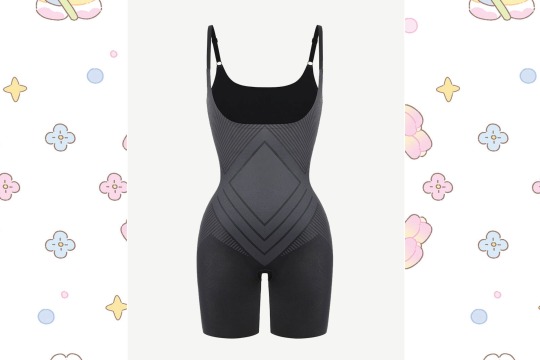
Get it here
One-piece Shapewear Briefs: Confidence in a Single Piece
Do you want full control over the midsection and coverage for the thighs? Waistdear's One-piece Shapewear Briefs are the answer. No seams mean no worries about visible lines, and the stretchy fabric moves with you. This all-in-one shapewear piece shows our commitment to practicality and comfort. So, check out these amazing wholesale body shapers and increase your wardrobe collection.

Get it here
Faja Body Shaper: Confidence with Precision
This Faja Body Shaper goes beyond regular shaping. By targeting specific areas, it sculpts the waist and highlights natural curves. Perfect for those who want a more defined look without compromising comfort. This amazing pieces shows their commitment to effective solutions. It caters to the needs of all those who love fashion and want to look good.

Get it here
Open Crotch Body Shaper: Easy Shaping
Innovative and practical, Open Crotch Body Shaper mixes shaping with everyday convenience. Its open crotch feature makes it great for daily wear. You will get midsection control and thigh shaping without giving up comfort. Such a thoughtful product reflects Waist Dear's dedication to understanding consumer needs. It is a shapewear that should fit into your lifestyle.

Get it here
Give Yourself Confidence in Every Shape With Shapewear!
This isn't an online store; it's a place for those shaping their confidence journey. The platform celebrates personal beauty and offers a range of diverse needs. With a focus on quality, style, and comfort, Waist Dear is a trustworthy companion. You can also take a look at their hot sale custom waist trainer for confident curves.
How to Get a Personalized Shaping Experience?
Those thinking about wholesale body shapers can have options for bulk orders. You do not have to sacrifice personal preferences. For a more personalized experience, it offers waist trainers and other products. You should know that all products let you tailor your shapewear to your unique needs.
Go Beyond the Ordinary With Your Style
The shapewear or body shapers go beyond the basics. Each product is not only an item of clothing. It makes an excellent company in your styling journey. Let's embrace and celebrate your unique beauty with Waistdear.
Disclaimer: This post is sponsored by Waistdear
3 notes
·
View notes
Text
Unique integrated storage design for easy carriers can be stored in outdoor activities, a variety of tea set, folding table design, making outdoor activities more convenient and efficient!
#getoutside#outside#nature#outdoor#freshair#greentealover#greentea#outdooractivities#gettogethers#gasstove#claypot#kettle#gaiwan#anjibaicha#whitetea#weekendlife#interestingdesign#elegantdesign#cool#portable#foldingtable#storage#storagebox#storageidea#multifunctional#creativity#outdoorequipment#outdoorlife#morimatea#teacup
5 notes
·
View notes